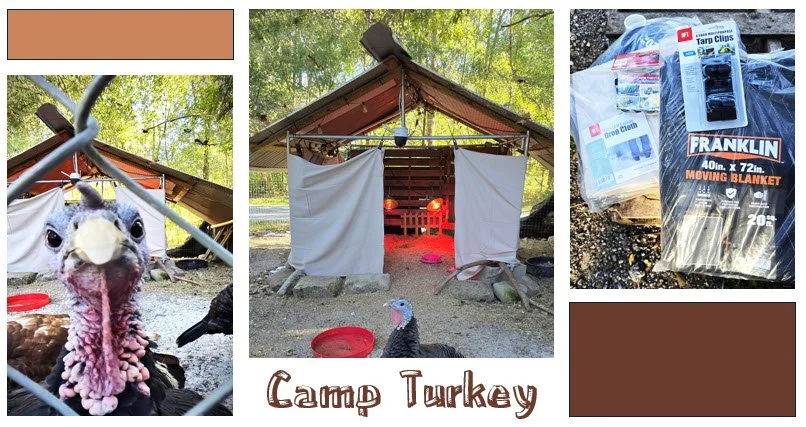I received a timely design question this month.
“Teresa: I live in a rural part of Central Florida and would like to have more wildlife, especially turkeys. What can I plant? “
Great question, Jim. Turkeys need three things: protected roosting sites, year-round food sources, and nesting cover. Being out in a rural section with lots of trees is also a preferred environment for turkeys. The wooded perimeter of cow pastures are also habitat for turkeys. Thick trees with understory of shrubs provide a sense of security where they can quickly run to escape a predator. Turkeys roost in trees at night for security.
To encourage turkeys to stay year round, supply food sources such as berries and fruits, insects, nuts, seeds, and vegetables. Oak trees with a turkey’s favorite food of acorns are ideal for turkey plots. A stand of Long Leaf Pine trees is also a good start. If your plot is within a mile of a lake or river that can provide water will also be helpful.
When choosing plant selections, diversity is important to remember. Three types of vegetation is optimal: groundcovers, taller grasses, and grains. Turkeys prefer lower groundcovers and grass when they forage. Grasses and small plants also necessary for turkeys to strut their stuff. Oops… I shouldn’t use the word stuff, should I?
Here is a nutritious menu for turkeys:
Grains: millet, oats, rice, soybeans, sorghum, and wheat.
Grasses: chufa, muhly grass, weeds,
Groundcovers: alfalfa, clover, legumes, rye grass, wildflowers,
Fruits and Vegetables, Insects, and Snakes.
The size of your turkey plots should be at least one-half to two acres bordering the edge of wooded conservation area or forest. Level the ground before any seeds are planted. Do not use herbicides to remove weeds or wait for the label’s instruction on timing to revegetate the area.
Leave an open strip of sand around the outside of your turkey plot. This will help turkeys dust themselves. Dust baths will help turkeys with itching, skin irrigation, maintain the feathers, and allows them to clean themselves.
Like wildflowers, Spring and late Summer is the best time to plant your turkey plot.










